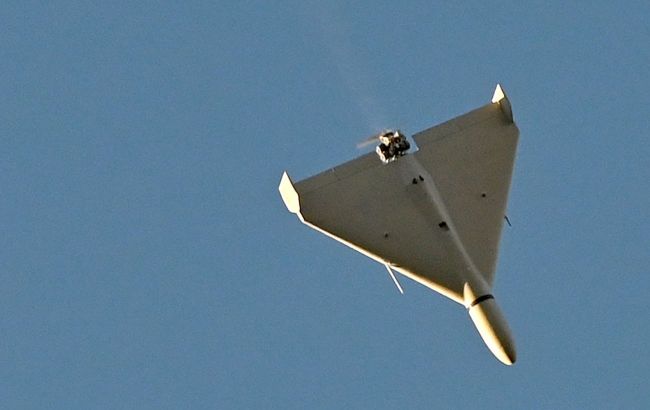New model of Russian Shaheds can target moving objects, media report
 Photo: The new model of Russian Shaheds can strike moving targets (Getty Images)
Photo: The new model of Russian Shaheds can strike moving targets (Getty Images)
A new model of Russian Shahed drones equipped with a night camera was used to locate and strike a Ukrainian rail echelon while it was moving, Militarnyi reports.
The outlet refers to footage published by a Russian propaganda channel. A group of drones operated by Russian operators struck a train transporting fuel tank cars at a distance of 150–200 kilometers from the state border. The first drone hit the locomotive, stopping the echelon, after which follow‑on drones struck the wagons and tank cars.
During the operation, the enemy drones encountered a pair of Ukrainian air‑defense helicopters, putting the Ukrainian pilots in a dangerous situation.
Russian sources also say that one of the strikes was aimed at nearby fuel storage tanks in the area of Bobovytsia, Chernihiv region.
According to Militarnyi, the first use of Russian Shaheds with an optical guidance system and radio control was detected in June, when Ukrainian forces shot one down in the Sumy direction.
An analytical unit of Ukraine’s Defense Intelligence (HUR) later published a report identifying the drone’s Iranian origin based on its construction, fuselage materials, and electronics layout. The base long‑range drone model is now reportedly almost fully localized and produced inside Russia.
Among the wreckage, analysts found a high‑performance Nvidia Jetson Orin mini‑computer used for video processing and capable of autonomously searching for targets by matching visual input against stored models.
However, in the newly released footage, the drones appeared to maintain direct links with Russian operators, indicating the use of airborne or ground-based relay systems.
Russia upgrades Shaheds
Earlier, Commander‑in‑Chief of the Armed Forces Oleksandr Syrskyi said Russia has been continuously upgrading its drones, including the Iranian Shaheds, equipping them with modern anti‑interception systems and even self‑destruct mechanisms.
He noted that Shaheds are now being fitted with:
-
optical terminal guidance systems;
-
12–16‑channel antennas that increase resistance to jamming;
-
sensors for fire‑ and collision‑avoidance.
These upgrades allow the enemy drones to perform unpredictable maneuvers, complicating efforts to destroy them.

